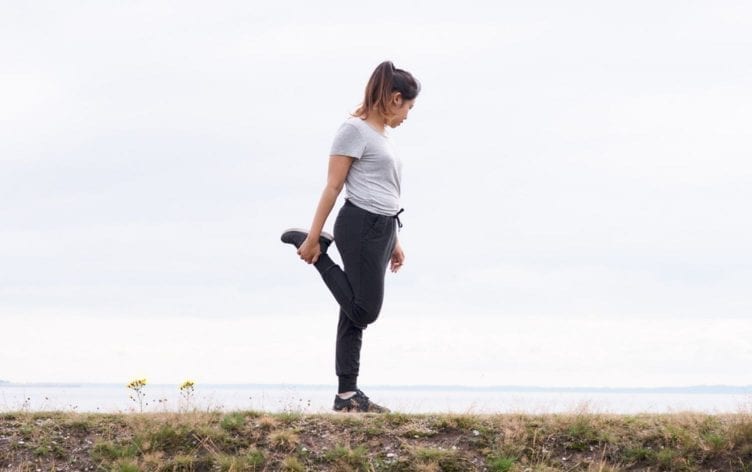
Many of us spend the bulk of our workout time on the usual pursuits: Fitness and strength. Few of us ever think about the other essential piece of a well-rounded fitness routine: flexibility training.
Flexibility — the ability to move muscles and joints through their complete range of motion — offers many benefits, and can affect how you feel physically and mentally, says Jessica Matthews, an assistant professor of kinesiology and integrative wellness at Point Loma Nazarene University in San Diego, California, and author of “Stretching to Stay Young.”
Tight, tense muscles and joints can limit your movements during exercise and daily living and cause muscle aches and pains over time. With greater range of motion, on the other hand, you may be able to minimize aches and pains, improve posture and make exercise more enjoyable, Matthews says.
Try these five expert-approved tips for upping your flexibility.
1
HOLD STATIC STRETCHES
Static stretching, a tried-and-true method of increasing flexibility, involves stretching your muscle(s) to the point of mild tension or discomfort and holding it there. But you can’t just bob in and out of a stretch after a few seconds — it takes at least 15–30 seconds (ideally 60 seconds) to see any changes in muscle length.
Why? Because that’s about how long it takes for your muscle to get used to the stretch, which helps shut off a built-in safety mechanism known as the stretch reflex.
“When your muscles detect a change in length — such as during a stretch — a signal is sent to the nervous system, which triggers a stretch reflex,” Matthews says. The stretch reflex opposes your attempts to lengthen your muscle by causing the muscle to contract or shorten. This may be annoying if you’re trying to stretch, but the ultimate goal of the stretch reflex is to protect your muscles against overstretching and injury (like a muscle tear).
However, when you hold a stretch long enough, the stress reflex calms down, which allows your muscle to relax and lengthen.
So, be sure to hold static stretches for about a minute, or a minimum of five slow, controlled breaths.
2
TARGET ALL MAJOR MUSCLE GROUPS
Just because you can touch your toes doesn’t mean you have whole-body flexibility. And just because today was leg day at the gym doesn’t mean you should neglect your shoulders, neck and chest during your post-workout stretch.
For your body to feel and function at its best, it’s important to stretch all your major muscle groups, Matthews says. Key areas include:
- Neck
- Chest
- Shoulders
- Trunk
- Lower back
- Hips
- Legs
- Ankles
Aim to stretch these areas at least 2–3 times per week.
3
MIX UP YOUR APPROACH
“While static stretching often comes to mind when [people] think of flexibility training, there are a variety of other effective and enjoyable approaches to improving flexibility and enhancing joint range of motion,” Matthews says. Using a variety of techniques can help keep your flexibility routine fresh.
Other methods you can incorporate into your flexibility routine include:
- Dynamic stretching: This is where you move your body through its full range of motion, instead of holding one position for an extended period. Examples of dynamic stretches include cat-cow, quadruped rotation, hinge and reach and leg swing.
- Proprioceptive neuromuscular facilitation: PNF stretching involves contracting and relaxing the target muscle group.
- Self-myofascial release: Foam rolling is a classic way to practice self-myofascial release. By rolling target muscles over the foam roller’s surface, you can release tension, increase blood flow, and improve range of motion.
4
STRETCH WARM MUSCLES
Stretching may be most effective when the target muscles are warm, according to Matthews. So, consider saving your stretch session (especially if you’re doing static stretches) for after exercise. Or, warm up your muscles with a hot bath or shower.
5
LISTEN TO YOUR BODY
“When it comes to flexibility training, or any type of training, there’s nothing to be gained by pushing your body to the point of pain,” Matthews says. To safely and effectively improve your flexibility, stretch only to the point where you feel tightness or mild discomfort. Going beyond these limits only increases your injury risk.
And remember: “Your flexibility training routine should be a relaxing and rejuvenating mind-body experience that supports and nourishes your overall health and optimal well-being,” Matthews says. It shouldn’t cause you pain or stress.
Unlock an experience that’s like having a dietitian, trainer and coach at your fingertips. Sign up for Premium for expert guidance and tools to help you reach your personal health goals.



